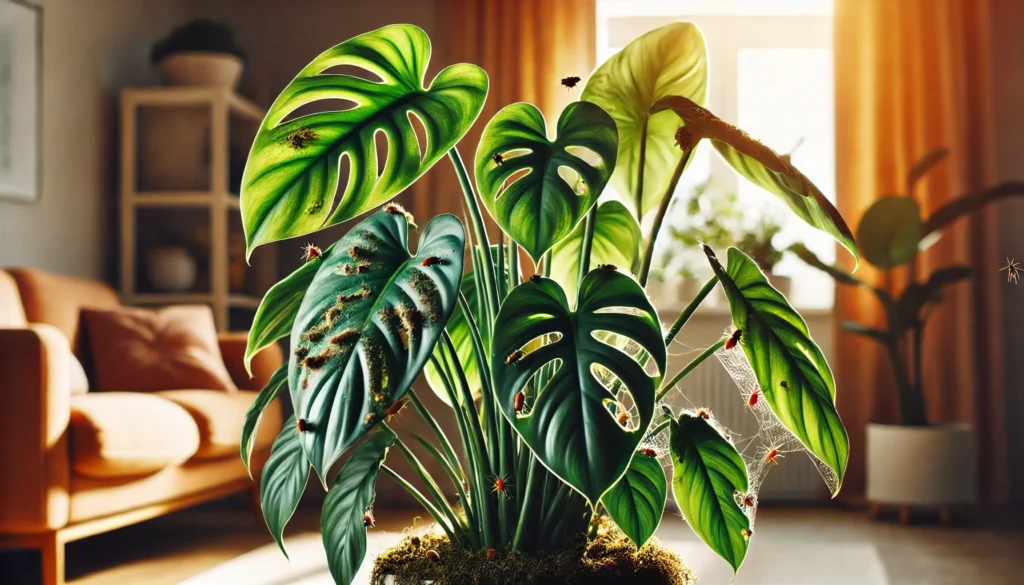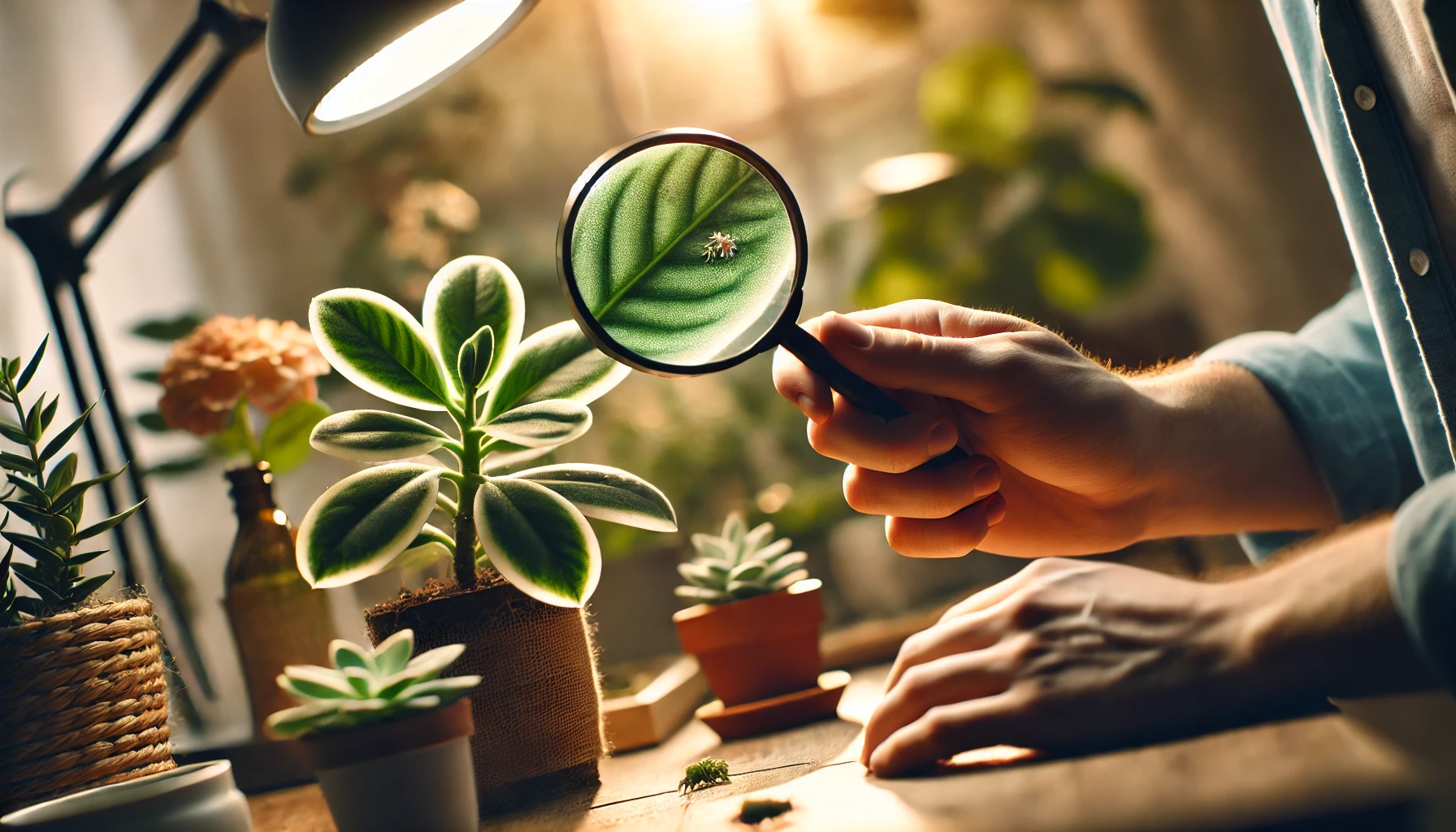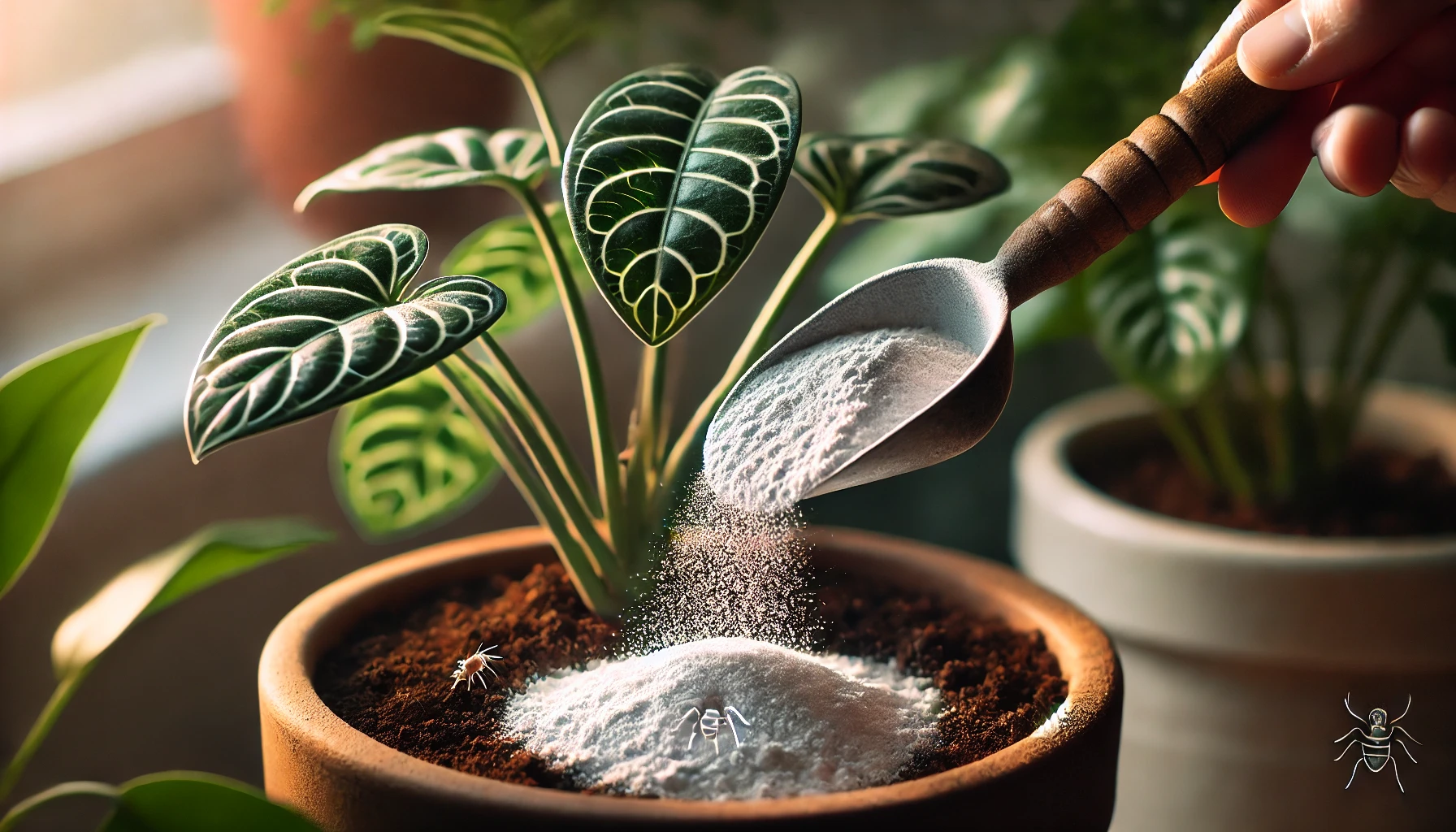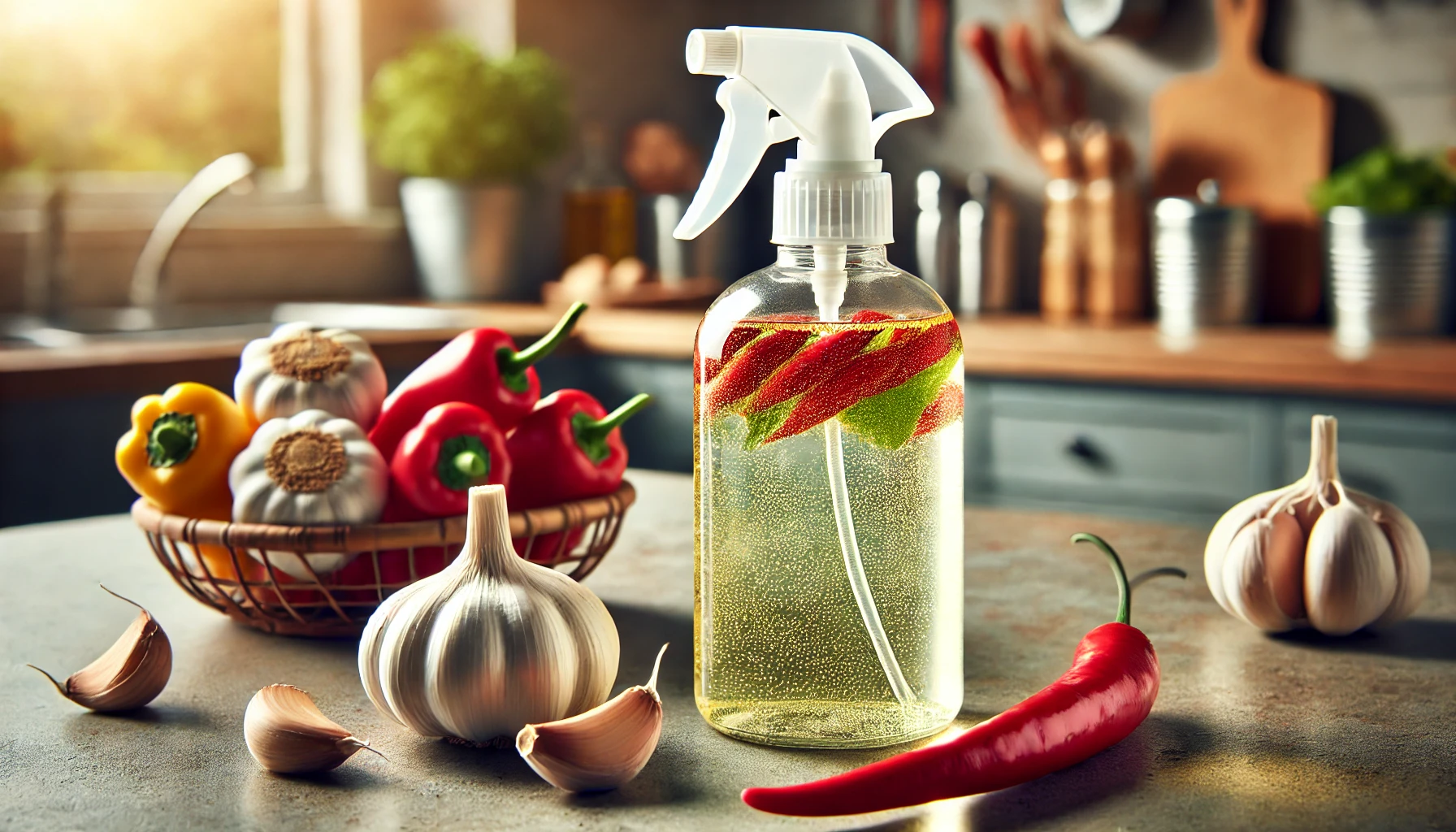
Effective Strategies for Controlling Indoor Plant Pests: A Complete Guide
Indoor plants are a wonderful way to add life and vibrancy to your space, but they can also attract pesky invaders. If you’ve ever noticed yellowing leaves, webs, or tiny bugs scurrying across your plants, you know how frustrating pest infestations can be. Controlling indoor plant pests is essential for maintaining healthy, thriving plants. While pests are a common challenge, the good news is that there are plenty of effective, natural, and safe strategies to keep them at bay. In this guide, we’ll walk you through practical steps you can take to protect your indoor plants and create a healthier environment for them to flourish.
Table of Contents
ToggleUnderstanding Indoor Plant Pests
Indoor plant pests can be sneaky, often hiding in the nooks and crannies of your plants until the damage is noticeable. Let’s break down the most common pests and how to spot them, so you can act fast to protect your green friends! 🌱
Common Types of Indoor Plant Pests
Here are the most frequent culprits that attack indoor plants:
- Aphids 🐜
Tiny, soft-bodied insects that suck sap from your plants, causing leaves to curl and distort. They also leave behind sticky residue. - Spider Mites 🕷️
These tiny pests are difficult to spot without a magnifying glass. They create fine webbing and cause leaves to turn yellow and dry out. - Mealybugs ❄️
White, cotton-like clusters found in plant crevices. They feed on plant sap and can cause leaf yellowing and stunted growth. - Fungus Gnats 🦟
Tiny black flies hovering around your plants. Their larvae feed on the roots, which can lead to root damage and wilting. - Whiteflies 🦋
Small, white-winged insects that fly off when disturbed. They suck sap and leave behind a sticky residue that attracts mold.

Signs of Pest Infestation
Look out for these signs to catch an infestation early:
- Yellowing Leaves 🌿
A common sign of pests feeding on plant sap, especially with aphids or mealybugs. - Sticky Residue 💧
Left behind by aphids or whiteflies, this can attract ants and promote mold growth. - Visible Pests 👀
Tiny bugs like aphids or spider mites may be visible on the leaves or stems, especially when inspecting closely. - Webbing or Wilted Leaves 🕸️
Spider mites create fine webbing on leaves, while wilted leaves could mean root damage from gnats.

Why Pests Thrive Indoors
Indoor environments provide the perfect conditions for pests: 🌡️
- Warmth 🌞
- Limited Natural Predators 🦋
- Stable Humidity 💧
These conditions allow pests to multiply quickly, especially if the plant care isn’t ideal.
Understanding these pests and their signs will help you take action early, ensuring your plants stay healthy and vibrant. Keep an eye out for the telltale signs and you’ll be one step closer to controlling indoor plant pests effectively!
Preventing Pest Infestation
The best way to deal with indoor plant pests is to prevent them from appearing in the first place. A little bit of care and vigilance can go a long way in keeping your plants pest-free! 🌿✨ Here’s how you can create an environment that’s not so inviting for pests.
Regular Inspection 🔍
Inspect your plants regularly for pests. Look closely at both sides of the leaves and the stems, as pests like aphids and spider mites often hide there. Early detection means early action, which prevents pests from spreading.
Proper Plant Care 💧🌞
Healthy plants are less likely to attract pests. Keep these tips in mind:
- Watering: Avoid overwatering, which can create a perfect breeding ground for pests like fungus gnats. Let the top layer of soil dry out between waterings.
- Lighting: Ensure your plants are getting the right amount of light. Plants under stress from improper light can become weak and more susceptible to pests.
Maintaining Cleanliness 🧼
Keeping your plants and surrounding area clean is crucial. Dust and debris can attract pests, so:
- Wipe Leaves: Gently wipe down your plant leaves with a damp cloth to remove dust, which can be a hiding spot for pests.
- Clean Pots and Sauces: Regularly clean your plant containers and trays to avoid stagnant water where pests can breed.
Isolate New Plants 🪴
Before introducing a new plant to your indoor garden, quarantine it for at least a week. This way, you can catch any pests before they have a chance to spread to your other plants. It’s better to be safe than sorry! 🦠

By following these preventive steps, you’ll significantly reduce the chances of pests infesting your indoor plants. Prevention is key to keeping your plants happy and healthy! 🌟
Natural Remedies for Controlling Indoor Plant Pests
When it comes to controlling indoor plant pests, natural remedies are a fantastic way to protect your plants without harming the environment. 🌿✨ Here are some effective and safe options you can easily use to combat pests:
Neem Oil 🌰
Neem oil is a powerful natural pesticide that works wonders on various pests, including aphids, mealybugs, and spider mites. It disrupts the pests’ feeding and breeding cycles, making it a great option for long-term pest control.
- How to Use: Mix 2 tablespoons of neem oil with 1 liter of water. Spray the mixture on the affected areas, making sure to coat both the top and bottom of the leaves. Repeat every 7-14 days.

Insecticidal Soap 🧴
Insecticidal soap is a plant-safe solution that targets soft-bodied pests like aphids, mealybugs, and spider mites. It works by breaking down the outer layers of the pests, causing dehydration.
- How to Use: Simply mix the soap with water (as per the instructions on the label) and spray it directly on the pests. Make sure to cover all infested areas. Reapply as needed.

Diatomaceous Earth 🏜️
Diatomaceous earth is a fine powder made from fossilized algae that can be sprinkled on soil or leaves. It dehydrates pests like aphids, slugs, and even ants without harming your plants.
- How to Use: Lightly dust the soil or the affected areas of the plant with diatomaceous earth. It’s non-toxic and safe to use indoors. Just make sure to wear a mask to avoid inhaling the fine powder.

Essential Oils 🌸
Essential oils like peppermint, lavender, or tea tree oil act as natural insect repellents. Their strong scents confuse pests and deter them from feeding or nesting on your plants.
- How to Use: Mix 10-15 drops of your chosen essential oil with 1 liter of water. Add a tiny bit of dish soap to help the oil mix with the water, then spray the solution onto your plants.

Homemade Garlic or Chili Spray 🧄🌶️
Garlic and chili peppers have natural pest-repelling properties that can keep insects away. The strong smell of garlic and the heat from chili peppers make them unappealing to most pests.
- How to Use: Blend a few cloves of garlic or a couple of chili peppers with water. Let it sit overnight, strain it, and then spray it on your plants to keep pests away.

By using these natural remedies, you can protect your plants from pests while keeping your indoor space safe and eco-friendly. 🌍 Remember to always test these remedies on a small area first to ensure they don’t cause any damage to your plants!
Chemical Solutions for Persistent Infestations
While natural remedies are great for prevention and mild infestations, sometimes pests can become too persistent. When you’re dealing with a serious infestation, chemical solutions can provide a more immediate and effective approach. ⚡ However, it’s important to use these products carefully to ensure the safety of your plants, pets, and family. Here’s a guide to using chemical solutions for controlling indoor plant pests.
Choosing Safe and Effective Pesticides 🛒
When selecting a chemical pesticide, look for products specifically formulated for indoor use. Here are some key factors to keep in mind:
- Plant-Safe Formulas: Opt for pesticides that are labeled as safe for the type of plants you have. Some products are harsh and can harm delicate indoor plants.
- Low Toxicity: Choose products with low toxicity to humans and pets, such as pyrethrins or insecticidal soaps that are effective but less harmful than harsher chemicals.
Systemic vs. Contact Pesticides:
- Systemic Pesticides: These are absorbed by the plant and can kill pests feeding on the plant over time. They’re a good choice for pests like mealybugs and aphids.
- Contact Pesticides: These kill pests on contact and work best for immediate control.
When to Use Chemical Pesticides 🕒
Chemical pesticides should be your last resort. It’s important to consider these guidelines:
- When Natural Remedies Fail: If pests persist after using natural methods like neem oil or insecticidal soap, it’s time to consider a chemical option.
- Severe Infestations: If your plants are severely infested or pests are spreading to other plants, chemical treatment may be necessary to quickly eliminate the problem.
- Follow Instructions Carefully: Always read the product’s label and follow the recommended application instructions. Overuse can damage your plants and harm your indoor environment.
How to Apply Chemical Solutions 🌡️
To apply pesticides safely:
- Use a Spray Bottle: A spray bottle helps apply the chemical solution evenly. Make sure to coat both sides of the leaves, stems, and any other affected areas.
- Wear Protective Gear: Always wear gloves, a mask, and protective clothing to avoid direct exposure to the chemicals.
- Apply in the Evening: It’s best to apply pesticides in the evening when the sun is lower, as some chemicals can burn plants if exposed to direct sunlight after application.
- Ventilate Your Space: Make sure your indoor area is well-ventilated while using chemical products to avoid inhaling fumes.

Reapplying Chemical Solutions 🔄
Chemical treatments may need to be reapplied every 7-14 days to ensure pests are fully eradicated. Keep monitoring your plants closely during this period to make sure the infestation is under control.
While chemical pesticides can be highly effective, they should always be used as part of a balanced approach. By combining these treatments with preventive care and natural remedies, you’ll be able to keep your indoor plants safe from pests for the long term. 🌱
Managing Soil-Borne Pests
Soil-borne pests, like fungus gnats and root aphids, can be tricky to control because they live below the surface of the soil, making them harder to detect. These pests feed on your plant’s roots, which can lead to wilting, yellowing leaves, and stunted growth. 🌱 Here’s how to manage these sneaky invaders effectively:
Fungus Gnats Control 🦟
Fungus gnats are one of the most common soil-borne pests in indoor plants. Their larvae feed on the roots of plants, causing damage that leads to weak growth and wilting.
How to Identify Fungus Gnats:
- Look for small, black flies flying around your plants.
- Check for tiny larvae in the top layer of soil.

Prevention & Control:
- Let the Soil Dry Out: Fungus gnats thrive in moist conditions, so allow the top 1-2 inches of soil to dry out before watering again. This disrupts the lifecycle of the gnats.
- Yellow Sticky Traps: Place yellow sticky traps near your plants to catch adult fungus gnats. The color attracts them, helping reduce the population.
- Beneficial Nematodes: These microscopic worms feed on fungus gnat larvae. You can introduce them to the soil to control the larvae naturally.
Root Aphids Control 🐜
Root aphids are another soil-dwelling pest that feeds on plant roots, causing damage to the plant’s root system and stunting its growth.
How to Identify Root Aphids:
- Look for wilting plants, poor growth, or yellowing leaves, as these are signs of root aphid activity.
- You may also notice a sticky residue on the soil or leaves (from the aphid’s excretions).

Prevention & Control:
- Inspect New Plants: Quarantine any new plants to prevent introducing root aphids.
- Beneficial Nematodes: Just like with fungus gnats, nematodes can be effective in targeting root aphids.
- Soil Drenching with Insecticidal Soap: A soil drench with insecticidal soap can help control aphids in the root zone.
Sterilizing Soil Before Repotting 🌱🧴
Before repotting a plant, it’s important to sterilize the soil to avoid introducing pests. Pests like root aphids and fungus gnats can lurk in the soil and reinfest your plant if it’s not properly treated.
How to Sterilize Soil:
- Oven Method: Preheat your oven to 180°F (82°C). Spread the soil on a baking sheet and heat it for 30 minutes to kill any pests, eggs, or pathogens.
- Boiling Water: Pour boiling water over the soil to kill pests, but be sure to let the soil cool before using it to repot your plant.

Repotting Plants Properly 🌿
When repotting, make sure to remove as much of the old soil as possible from the plant’s roots. This reduces the risk of transferring pests into the new pot.
- Use Fresh Soil: Always use clean, pest-free potting mix when repotting.
- Check the Roots: Inspect the plant’s roots for any visible pests or signs of damage before placing the plant into fresh soil.

By addressing soil-borne pests early and using these strategies, you can keep your plants healthy and free from root damage. Prevention is key—so keep an eye on your plants and their soil, and act quickly if you suspect an infestation! 🌱
Long-Term Pest Management
While dealing with pests effectively in the short term is important, ensuring your plants stay pest-free for the long haul requires consistent, ongoing care. Long-term controlling indoor plant pests involves a combination of prevention, monitoring, and environmental adjustments to create a healthy, balanced ecosystem for your plants. 🌿 Here’s how to stay ahead of pests and maintain healthy indoor plants for the long run:
Create a Healthy Indoor Garden Environment 🏡
Pests are more likely to attack stressed or weakened plants. By ensuring your plants are healthy, you’ll naturally reduce their susceptibility to pests.
- Proper Lighting 💡: Ensure each plant is placed in the correct light conditions. Over or underexposure to light can stress plants, making them more vulnerable to pests.
- Correct Watering Practices 💧: Overwatering can lead to root rot and fungal problems, while underwatering weakens your plants. Water your plants properly, letting the soil dry out between waterings when needed.
- Temperature and Humidity Control 🌡️: Maintain an appropriate temperature and humidity level for your plants. Pests thrive in areas with fluctuating conditions, so creating a stable environment is key.

Regular Maintenance and Inspection 🔍
Routine checks can help you catch any pest problems before they spiral out of control.
- Weekly Inspections: Set aside time each week to closely examine your plants. Look for any changes in leaf appearance, growth patterns, or the presence of pests.
- Remove Dead Plant Material 🌿: Dead leaves or stems can attract pests. Regularly prune and remove decaying plant material to keep pests away.
- Clean Plant Surfaces 🧼: Dust and debris can harbor pests. Wipe down leaves and clean the area around your plants regularly to prevent pest habitats.

Integrated Pest Management (IPM) 🛠️
Integrated Pest Management is a holistic approach that combines various techniques to prevent and control pests while minimizing harm to the environment.
- Biological Controls 🦋: Introduce beneficial insects like ladybugs, predatory mites, or nematodes to control pest populations naturally.
- Physical Barriers 🚫: Use mesh screens or plant collars to keep pests from reaching the plant. You can also cover the soil with a thin layer of sand or diatomaceous earth to prevent soil pests from emerging.
- Cultural Practices 🌱: Rotate plants regularly and avoid crowding them to prevent pest spread. Overcrowding can increase humidity and create favorable conditions for pests to thrive.

Be Mindful of New Plant Introductions 🌿
New plants are a common source of pest introduction. To avoid bringing pests into your home:
- Quarantine New Plants 🪴: Before introducing new plants to your indoor garden, keep them isolated for 1-2 weeks to ensure they’re pest-free.
- Inspect and Clean 👀: Before bringing a new plant inside, carefully inspect it for pests. Wipe down the leaves, stems, and soil surface to remove any hitchhiking insects or eggs.

Use Organic or Low-Toxicity Pesticides 🧴
While long-term pest management focuses on prevention, sometimes a light touch of pesticide is needed. Always prioritize organic or low-toxicity options that won’t harm your plants, pets, or the environment.
- Neem Oil and Insecticidal Soaps: These are great choices for ongoing pest management. Use them periodically to prevent pest populations from building up.
- Essential Oil Sprays: Regular use of essential oil-based sprays can help deter pests naturally.

By implementing these long-term pest management strategies, you’ll create a healthier environment for your indoor plants, making them less prone to infestations and ensuring they thrive for years to come. 🌱
Final Thought
Managing and controlling indoor plant pests doesn’t have to be a daunting task. With the right strategies, your plants can stay healthy and pest-free for years to come! 🌿 Whether you choose natural remedies, chemical solutions, or a combination of both, the key is consistency and early action. Regular maintenance, proper care, and a little vigilance will go a long way in preventing pests from taking over your indoor garden. 🌸
Remember, creating a healthy environment for your plants is the first step in pest prevention. By maintaining good plant care practices, regularly inspecting for pests, and using natural or low-toxicity treatments, you’ll ensure that your plants flourish without the interference of unwanted pests. 🌱
Don’t forget to embrace a holistic, long-term approach to pest management. This way, you’ll not only get rid of pests but also create a thriving, balanced indoor garden that continues to bring joy and beauty into your space. Happy gardening! 🌿✨
Frequently Asked Questions (FAQ)
What are the most common pests that affect indoor plants?
Aphids, spider mites, fungus gnats, mealybugs, and scale insects are common indoor plant pests.
How can I prevent pests from infesting my indoor plants?
Regularly inspect plants, keep leaves clean, avoid overwatering, and quarantine new plants before introducing them.
What are natural ways to get rid of indoor plant pests?
Neem oil, insecticidal soap, and a mixture of water and dish soap can effectively control pests without chemicals.
How do I know if my plant has a pest problem?
Look for yellowing leaves, sticky residue, webbing, or tiny moving insects on leaves and stems.
Can overwatering attract pests to indoor plants?
Yes, excess moisture creates a breeding ground for fungus gnats and can weaken plants, making them more vulnerable.
What is the best way to get rid of fungus gnats?
Let the soil dry out between waterings, use sticky traps, and apply beneficial nematodes or hydrogen peroxide solutions.
How do I treat spider mite infestations on houseplants?
Spray leaves with water, wipe them with neem oil, and increase humidity to discourage mites from spreading.
Are there any beneficial insects for indoor pest control?
Yes, ladybugs and predatory mites can help control common pests if released in a controlled environment.
